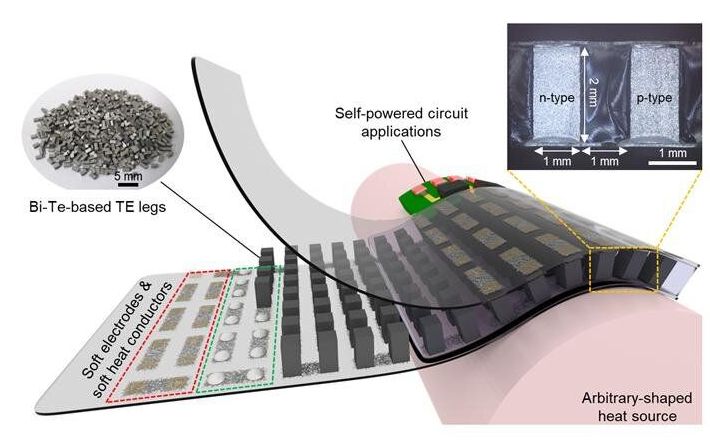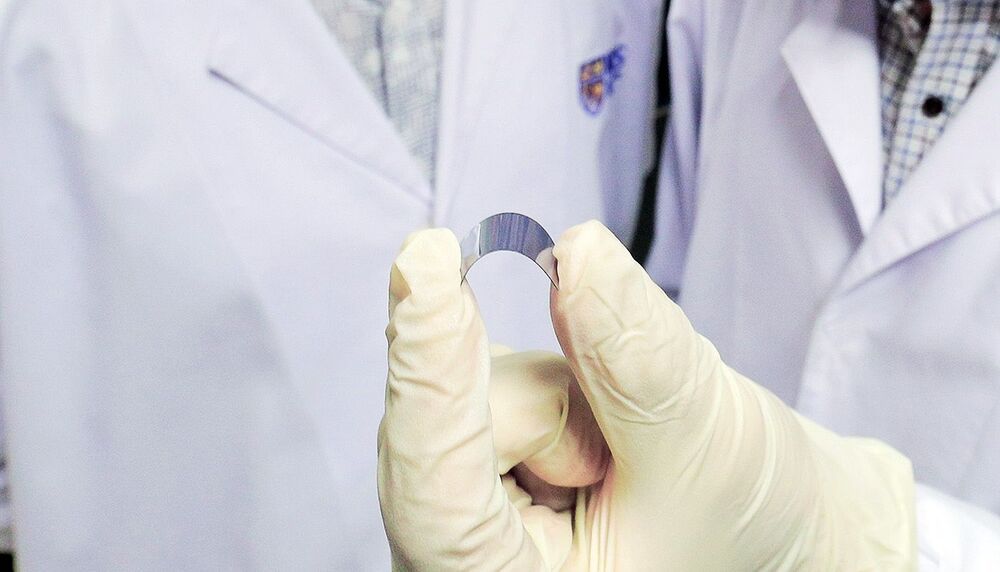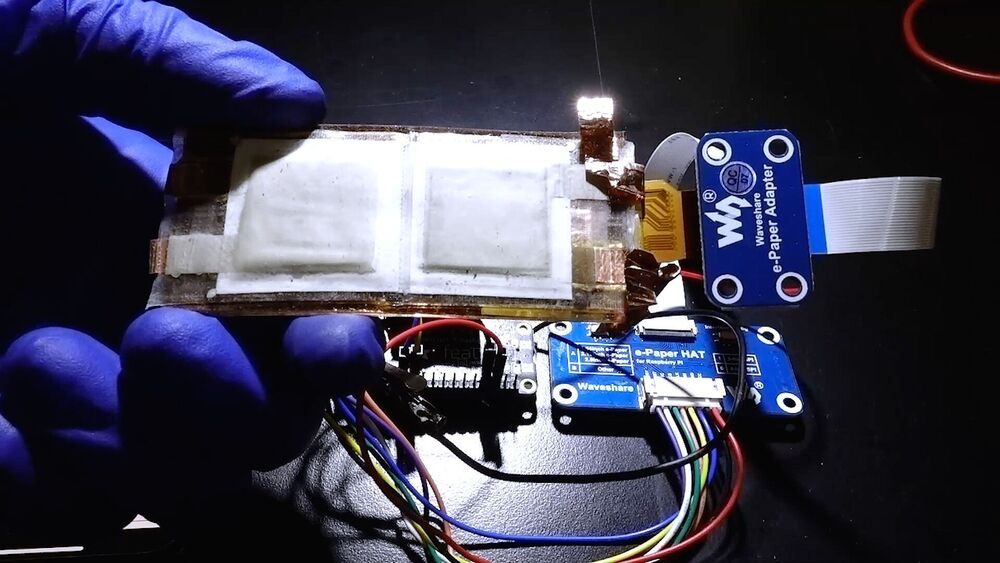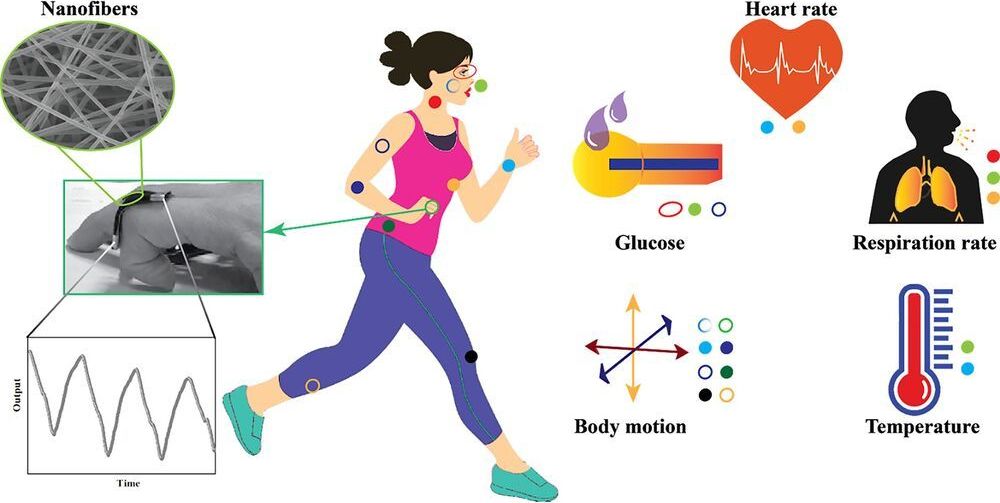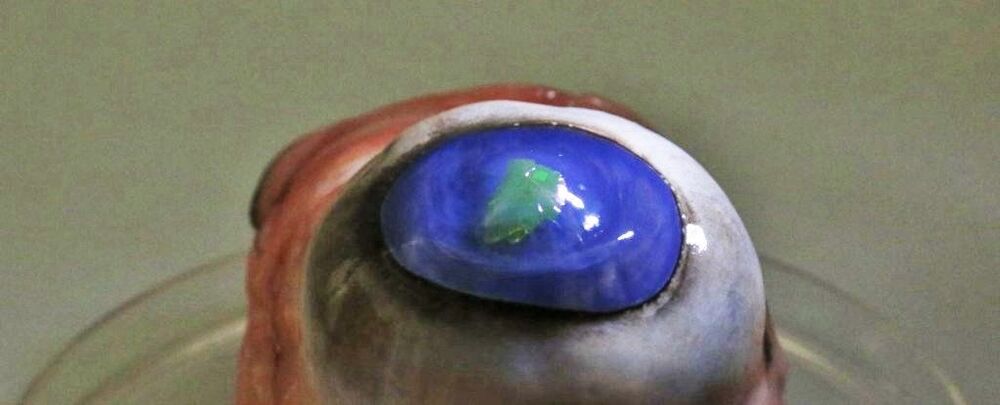Archive for the ‘wearables’ category: Page 41
Jan 13, 2021
Flexible thermoelectric devices enable energy harvesting from human skin
Posted by Dan Lovy in categories: energy, robotics/AI, wearables
A thermoelectric device is an energy conversion device that uses the voltage generated by the temperature difference between both ends of a material; it is capable of converting heat energy, such as waste heat from industrial sites, into electricity that can be used in daily life. Existing thermoelectric devices are rigid because they are composed of hard metal-based electrodes and semiconductors, hindering the full absorption of heat sources from uneven surfaces. Therefore, researchers have conducted recent studies on the development of flexible thermoelectric devices capable of generating energy in close contact with heat sources such as human skins and hot water pipes.
The Korea Institute of Science and Technology (KIST) announced that a collaborative research team led by Dr. Seungjun Chung from the Soft Hybrid Materials Research Center and Professor Yongtaek Hong from the Department of Electrical and Computer Engineering at Seoul National University (SNU, President OH Se-Jung) developed flexible thermoelectric devices with high power generation performance by maximizing flexibility and heat transfer efficiency. The research team also presented a mass-production plan through an automated process including a printing process.
The heat energy transfer efficiency of existing substrates used for research on flexible thermoelectric devices is low due to their very low thermal conductivity. Their heat absorption efficiency is also low due to lack of flexibility, forming a heat shield layer, e.g., air, when in contact with a heat source. To address this issue, organic-material-based thermoelectric devices with high flexibility have been under development, but their application on wearables is not easy because of its significantly lower performance compared to existing inorganic-material-based rigid thermoelectric devices.
Dec 29, 2020
Housemaid Robot from Japan | High-Tech and Robotics News
Posted by Magaly Santiago in categories: biotech/medical, cyborgs, Elon Musk, robotics/AI, wearables

https://www.youtube.com/watch?v=xp8_ZvjiaOU&feature=youtu.be
Robo maid I like my coffee light and sweet.
Robots from Japan: the new Toyota robot, giant robot, robot waiter and other technology news 2020. High Technology News 2020. Science and Technology News 2020. The newest and coolest robots from Japan and around the world.
Continue reading “Housemaid Robot from Japan | High-Tech and Robotics News” »
Dec 26, 2020
This terahertz emitter could be a wearable bomb detector
Posted by Quinn Sena in category: wearables
:ooooooooooo.
Flexible THz emitter (Credit: NUS)
The problem is that current sources of THz waves are large, multi-component systems that are expensive, not very mobile, and difficult to operate.
Dec 16, 2020
Scientists develop novel self-healing human-machine interactive hydrogel touch pad
Posted by Shailesh Prasad in categories: engineering, mobile phones, wearables
A research group led by Prof. Chen Tao at the Ningbo Institute of Materials Technology and Engineering (NIMTE) of the Chinese Academy of Sciences (CAS), developed a novel soft self-healing and adhesive human-machine interactive touch pad based on transparent nanocomposite hydrogels, in cooperation with the researchers from the Beijing Institute of Nanoenergy and Nanosystems of CAS. The study was published in Advanced Materials.
With the rapid development of information technology and the Internet of things, flexible and wearable electronic devices have attracted increasing attention. A touch pad is a requisite input device for a mobile phone, smart appliance and point-of-information terminal. Indium tin oxide (ITO) has been used as the dominant transparent conductive film for manufacturing commercial touch pads, which inevitably have obvious shortcomings, like fragility.
To improve the stretchability and biocompatibility of touch pads to allow their interaction with humans, the researchers at NIMTE developed highly transparent and stretchable polyzwitterion-clay nanocomposite hydrogels with transmittance of 98.8% and fracture strain beyond 1500%.
Dec 15, 2020
Earable computing: A new research area in the making
Posted by Saúl Morales Rodriguéz in categories: augmented reality, computing, health, mobile phones, security, wearables
CSL’s Systems and Networking Research Group (SyNRG) is defining a new sub-area of mobile technology that they call “earable computing.” The team believes that earphones will be the next significant milestone in wearable devices, and that new hardware, software, and apps will all run on this platform.
“The leap from today’s earphones to ‘earables’ would mimic the transformation that we had seen from basic phones to smartphones,” said Romit Roy Choudhury, professor in electrical and computer engineering (ECE). “Today’s smartphones are hardly a calling device anymore, much like how tomorrow’s earables will hardly be a smartphone accessory.”
Instead, the group believes tomorrow’s earphones will continuously sense human behavior, run acoustic augmented reality, have Alexa and Siri whisper just-in-time information, track user motion and health, and offer seamless security, among many other capabilities.
Dec 13, 2020
This flexible and rechargeable battery is 10 times more powerful than state of the art
Posted by Saúl Morales Rodriguéz in categories: robotics/AI, wearables
A team of researchers has developed a flexible, rechargeable silver oxide-zinc battery with a five to 10 times greater areal energy density than state of the art. The battery also is easier to manufacture; while most flexible batteries need to be manufactured in sterile conditions, under vacuum, this one can be screen printed in normal lab conditions. The device can be used in flexible, stretchable electronics for wearables as well as soft robotics.
The team, made up of researchers at the University of California San Diego and California-based company ZPower, details their findings in the Dec. 7 issue of the journal Joule.
“Our batteries can be designed around electronics, instead of electronics needed to be designed around batteries,” said Lu Yin, one of the paper’s co-first authors and a Ph.D. student in the research group of UC San Diego’s nanoengineering Professor Joseph Wang.
Dec 10, 2020
NIH Funds Clinical Trial to Test Device That Heals Wounds With Ultrasound
Posted by Quinn Sena in categories: biotech/medical, engineering, health, wearables

Drexel University researchers are one step closer to offering a new treatment for the millions of patients who suffer from slow-healing, chronic wounds. The battery-powered applicator — as small and light as a watch — is the first portable and potentially wearable device to heal wounds with low-frequency ultrasound.
The National Institutes of Health (NIH) has awarded the research team an estimated $3 million to test the therapy on 120 patients over the next five years. By using diagnostic monitoring of blood flow in the wound tissue, the clinical trial will also determine how nutrition and inflammation impact wound closure, making treatment customization a possibility.
Continue reading “NIH Funds Clinical Trial to Test Device That Heals Wounds With Ultrasound” »
Dec 10, 2020
Emerging wearable technology uses tiny fibers that can track your blood pressure, heart rate, and more
Posted by Jeff Myers in categories: biotech/medical, wearables
A shirt that monitors your blood pressure or a pair of socks that can keep track of your cholesterol levels might be just a few years away from becoming reality.
In an article published in Applied Physics Reviews, researchers examine the use of microfibers, and even smaller nanofibers, as wearable monitors that could keep track of a patient’s vital signs.
The microfiber- and nanofiber-based technology addresses growing concerns in the medical community about monitoring chronic illnesses like diabetes, asthma, obesity, and high blood pressure as the population ages.
Dec 8, 2020
Finally, a Contact Lens That Actually Beams Lasers From Your Eyes
Posted by Quinn Sena in categories: biotech/medical, security, wearables
Circa 2018
Scientists have created an ultrathin, flexible film that can emit laser light — and successfully tested it on a contact lens, demonstrating the possibility of laser eye-beams.
Before you rush out and buy a Cyclops-style visor, it’s not even close to powerful enough to cause damage. Instead, the researchers say, the technology has potential for use as wearable security tags, or even as a type of laser barcode.
Continue reading “Finally, a Contact Lens That Actually Beams Lasers From Your Eyes” »

